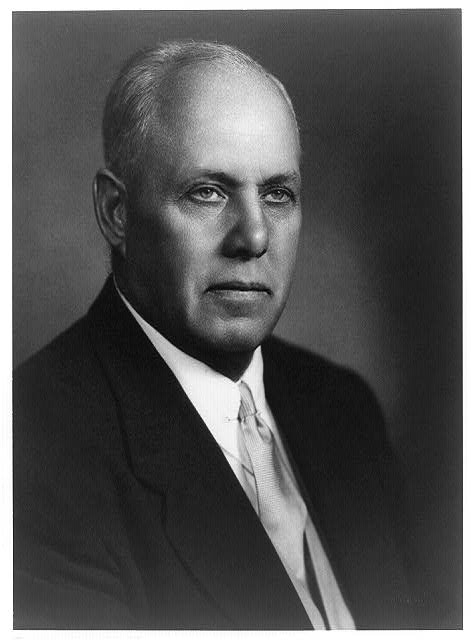- George Meany
Infobox Person
name = George Meany

image_size = 180px
caption =
birth_date = birth date|1894|8|16|mf=y
birth_place =
death_date = death date and age|1980|1|10|1894|8|16|mf=y
death_place =
occupation = Labor leader
spouse =
parents =
children =George Meany (
August 16 ,1894 –January 10 ,1980 ) was an American labor leader, who served as President of theAmerican Federation of Labor from 1952 to 1955, and then, following its merger with theCongress of Industrial Organizations in the latter year, as president of the unitedAFL-CIO from 1955 to 1979. He was born and raised onCity Island, Bronx and used to own a house there. He was rumored to be responsible for the disappearance ofJimmy Hoffa .Early career
Meany got his start as a plumber as an apprentice under Francis A. Taylor and eventually joined the New York City's Plumber's Union and served as a business agent for Local 463. After that, he was elected president of the New York State Federation of Labor and served until 1939. He served on the National Labor Relations Board during World War II.
Tenure
Meany was a great believer in the cooperation of labor and
capital . Under his leadership, the AFL and then the AFL-CIO supportedanticommunist policies. Unions deemedleftist , including the United Electrical Workers and the Retail Wholesale and Department Store Employees of America, were expelled from the CIO by the early 1950s. AFL-CIO unions then cooperated with employers to raid and decertify leftist unions. He was a steadfast supporter of theVietnam War .Meany was close to
Jay Lovestone , the formerCommunist Party USA leader turned anti-communist. Lovestone established theFree Trade Union Committee (now known as theAmerican Center for International Labor Solidarity ) as the overseas organizing tool of the AFL. Throughout Meany's tenure, Lovestone worked to establish non-communist and pro-American unions around the world. In the course of this work, the AFL collaborated with Latin American dictatorships against communist, radical, or opposition trade unions.He is famous for having said toward the end of his tenure that he had "never walked a picket line in his life."Fact|date=August 2007 He was succeeded by
Lane Kirkland .References
*Buhle, Paul. "Taking Care of Business: Samuel Gompers, George Meany, Lane Kirkland, and the Tragedy of American Labor." New York: Monthly Review Press, 1999. ISBN 1-58367-003-3
*Finke, Blythe F. "George Meany: Modern Leader of the American Federation of Labor." Charlotteville, N.Y.: SamHar Press, 1972. ISBN 0-87157-548-5
*Goulden, Joseph C. "Meany." New York: Atheneum, 1972.
*Robinson, Archie. "George Meany and His Times." New York: Simon and Schuster, 1981. ISBN 9780671421632External links
* [http://www.aflcio.org/aboutaflcio/history/history/meany.cfm "George Meany." AFL-CIO. No date.] Biography on the AFL-CIO Web site.
* [http://www.georgemeany.org/archives/ George Meany Memorial Archives.] Located at theNational Labor College inSilver Spring, Maryland .
* [http://www.laboreducator.org/darkpast1.htm Kelber, Harry. "Meany Hired a Former Top Communist To Run AFL-CIO’s International Affairs." "Labor Educator." No date.] Accessed April 2, 2005.
* Kim Scipes, 2000, “It’s Time to Come Clean: Open the AFL-CIO Archives on International Labor Operations.” Labor Studies Journal, Vol. 25, No. 2, Summer: 4-25. [Posted on-line in English by LabourNet Germany at http://www.labournet.de/diskussion/gewerkschaft/scipes2.html .
Wikimedia Foundation. 2010.
